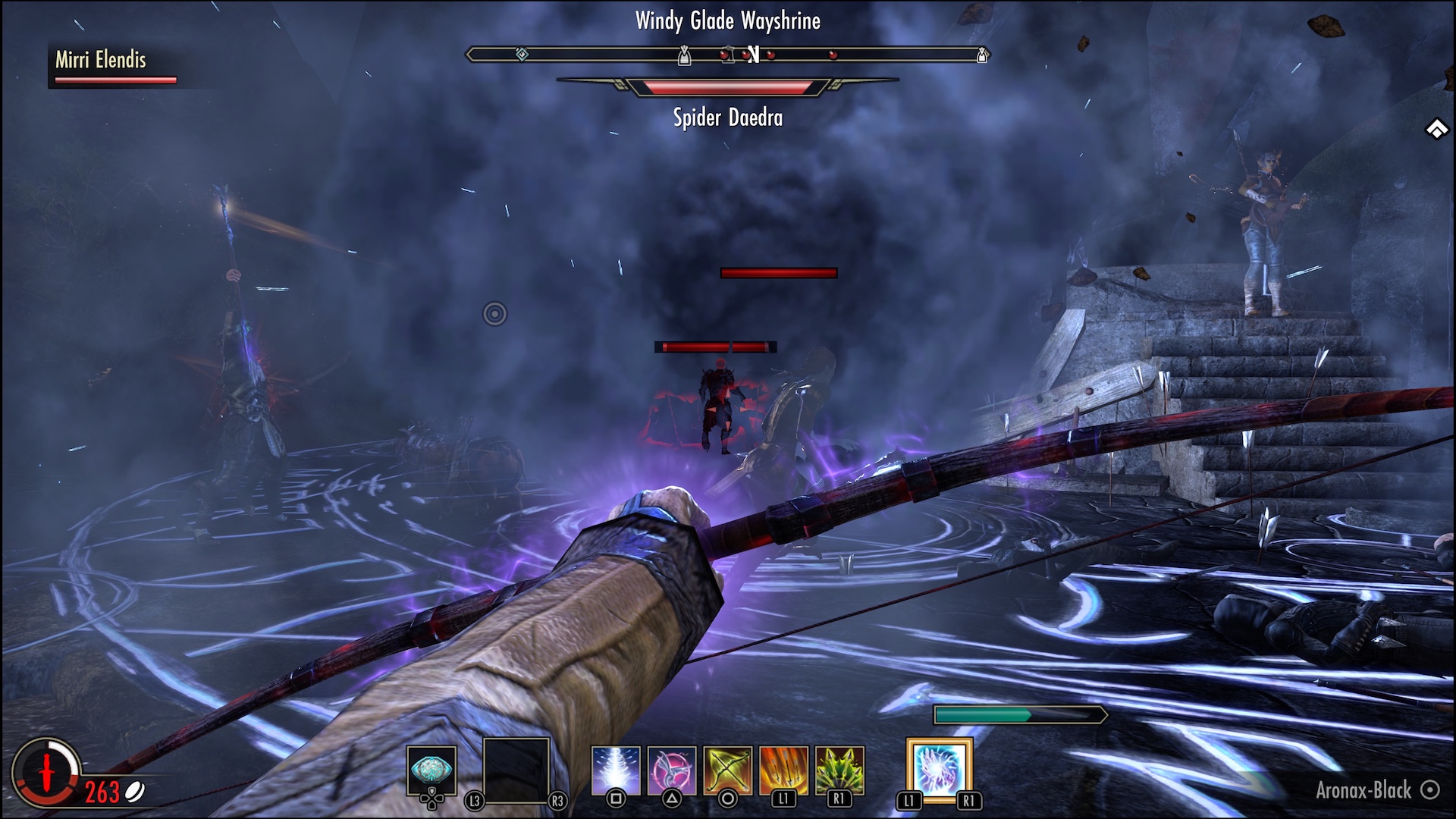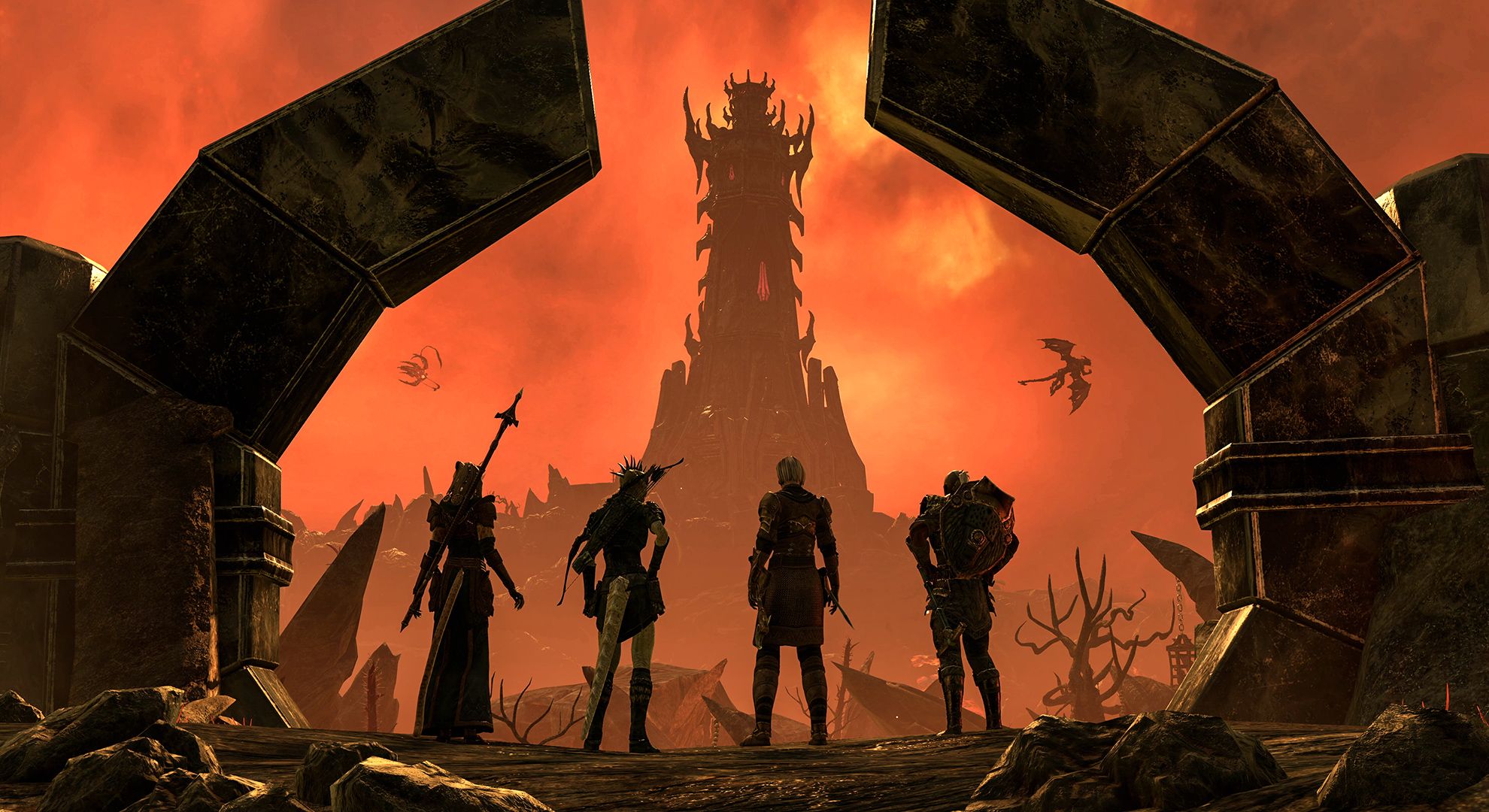


Morrowind was also the first Elder Scrolls game to build an active modding community around itself. Future Elder Scrolls titles doubled down on the console experience by focusing on accessibility and by streamlining gameplay systems. While it was still very much a PC-centric experience, in terms of the interface and depth of play, Morrowind's appearance on the original Xbox proved that deep, open-world RPGs could work on console. It's also important to note that Morrowind was the first Elder Scrolls title available on console. While it's been technically surpassed by newer titles, Morrowind's weird and wonderful environment still stands out compared to the generic worlds of Oblivion and Skyrim. This was best seen in the environmental narrative of Vvardenfall itself: a volcanic island with mushroom architecture, mysterious daedric ruins, and airborne jellyfish. While some systems still echoed the D&D-derived mechanics of the earlier games (melee combat with a chance to miss, for example), Morrowind set the template for every Elder Scrolls game to come.įrom a lore perspective, Morrowind started the process of creating a unique identity for the Elder Scrolls universe, instead of relying on standard high fantasy tropes like Daggerfall and Arena. Morrowind made the leap to polygonal 3D with the Gamebryo engine, featuring fully-modeled and textured characters and environments, as well as a day-night cycle. While Daggerfall's 圎ngine technically used a 3D renderer, characters and many objects were sprite-based. In terms of visuals, Morrowind was a massive step up. But every inch of it was hand-crafted, with diversity and attention to detail not seen before. Where the early two titles relied on procedural generation to build immense play spaces, Morrowind's Vvardenfall island was a mere 16 square kilometers. Morrowind was, in many ways, the opposite of Daggerfall and Arena. Six years after Daggerfall, Bethesda released Morrowind in 2002, the third mainline Elder Scrolls game. Daggerfall's 227 quests gave players a real reason to immerse themselves in its world. Apart from the 10 main story quests, Arena featured a number of randomized quest types, which all boiled down to trudging across yet another procedurally generated dungeon. Arena had a huge open world with few meaningful things to do. The real change here was in terms of density. Its sequel, Daggerfall, proved that Bethesda was onto great things.ĭaggerfall doubled down on Arena's innovations to deliver an experience that was just better in every way. It also introduced players to the hallmarks of future Elder Scrolls titles: wide-open spaces, exploration, and complete freedom. However, Arena did establish the lore and setting for future Elder Scrolls titles. This was clearly a first effort from a developer finding its footing in the RPG space. While the open world itself was nothing to write home about, the dungeon crawling experience was immersive for 1994.Īrena doesn't hold up today with its barren world, basic 3D graphics, and limited quest variety. Arena's first-person combat and exploration drew heavily from titles like Ultima Underworld. Just about everything else was created by the algorithm, using a limited number of premade assets. The continent of Tamriel featured only 17 hand-crafted dungeons. This was something of a double-edged sword, though. However, they were far more limited in terms of scale and interactivity.īy using procedural generation, Bethesda was able to create an immense open world, almost as large as the continental US. Titles like Ultima Underworld and Wizardry 7 superficially resemble Arena. The early and mid-90s were a heyday for first-person dungeon crawlers. Bethesda eventually scrapped the arena idea completely and doubled down on dungeon crawling and questing across an immense open world. Along the way, they'd do randomly generated side quests for NPCs.Īs development progressed on the game, the side quests and exploration became increasingly important. The Elder Scrolls: Arena players were originally meant to travel from city to city, fighting in different arenas and progressing to the Imperial City. In the early 1990s, Bethesda was a fledgling developer that collaborated with EA on John Madden Football, then it set out to create a fantasy arena fighting game. But there's plenty to discover and plenty to love across a quarter-century of Elder Scrolls history. No, "Skyrim 2" (cringe) probably isn't coming out anytime soon. But, as the franchise turns 26, it's a good idea to take a look back at how things got started.


 0 kommentar(er)
0 kommentar(er)
